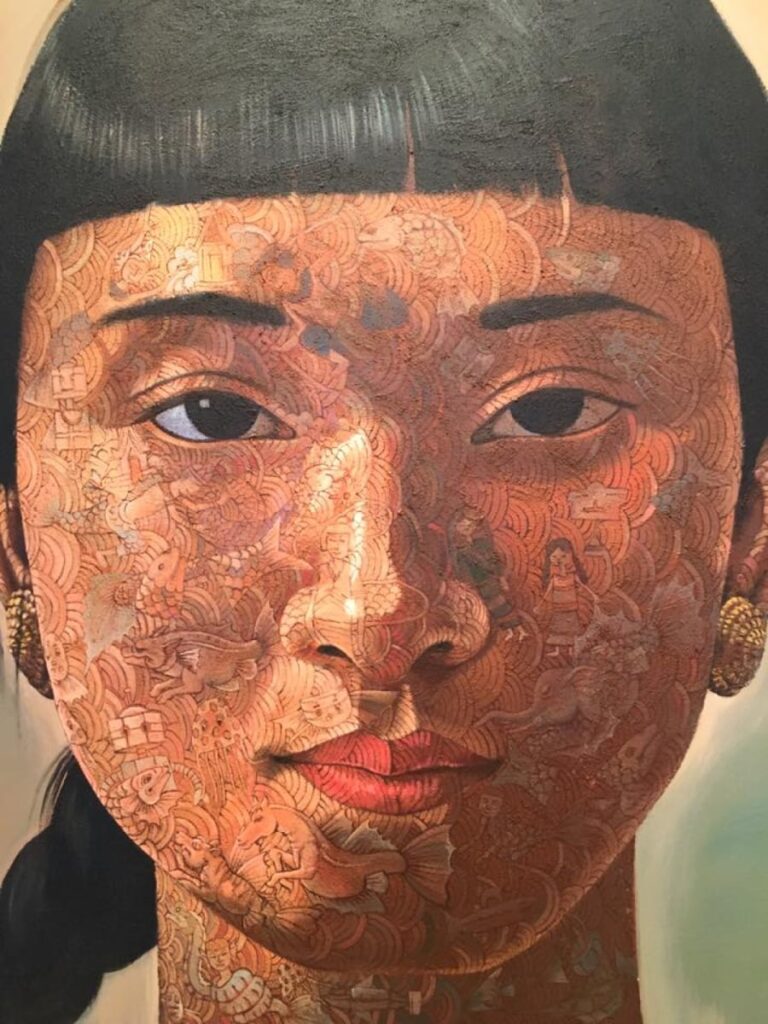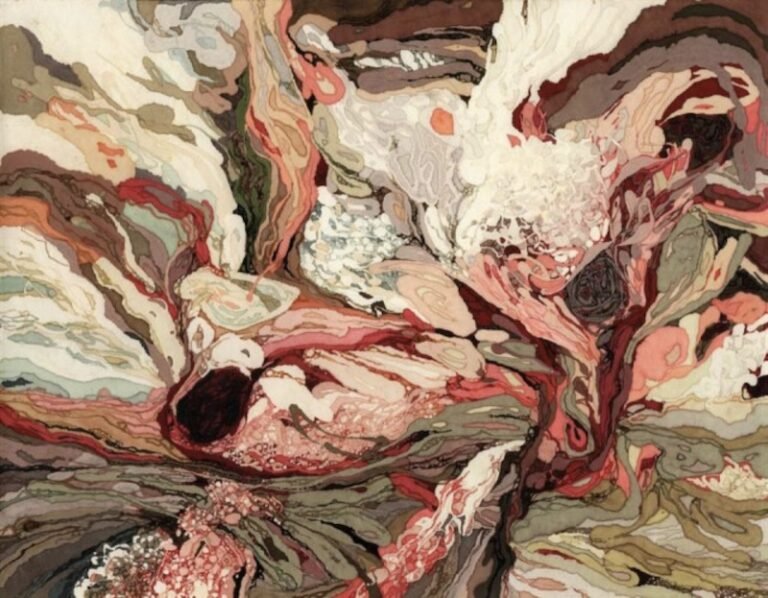You Jin’s oil paintings are an explosion of the mind, his images inspired by architecture and its fast-changing landscape, with thoughts as to where our future direction will go – with stairs leading to oblivion and outlined frames full of abstract swirls of colour instead of walls – a hint of possibilities and directions, The Tao is Empty in Origin (2021). The medium’s boundary of oil is pushed in its application as You searches for new techniques whilst incorporating a sense of computational mechanics – as though algorithms and graphics were added to architectural layouts before being stretched into multiple dimensions. The original appearance being distorted into something more organic, whilst still holding a recognisable element of the manufactured, the images floating in space with nothing to ground them to a specific setting in history or the future.
Starting with a bold backdrop of colour, You adds a growing collection of straight lines, spirals, spheres, blended curves and waves – causing your eyes to fill up with the feast – for every inch of the canvas is used in You’s exploration of unity; of its parts to its whole.
There’s no fear in You’s art of having too much but that there’s not enough canvas – his artwork combining multiple perspectives and viewpoints through a controlled-explosion of matter. Unsurprisingly, You’s art is described and labelled under a myriad of styles, those closest in description being abstract and psychedelic, contemporary and ever-changing.
You’s art blurs the areas of definable space, his bold lines breaking through to form alternatives in direction and a free-flowing sense of the creative – there are no limitations here. It also feels like a memoir of emotions, thoughts and memories, none of which are specifically identifiable but each tell of You’s introspection when producing his art.
 Whisper, 2015, Oil on Canvas, You Jin
Whisper, 2015, Oil on Canvas, You Jin
An outward reflection also exists in You’s paintings of urbanisation – both its effects on society, and its evolution, but there’s also a sense of distancing and a materialistic nature. Through overlapping lines of construction, shown in the bold forms and marked lines that You builds within his work, there are also human figures that lay concealed and caught within its artificial patterns. In Whisper (2015), a couple are almost unseen in the outline of their house, its unnecessary size swallowing them.
You’s work is filled with bright colours, but below this there are hints of a message that might be darker in context, of a degree of uncertainty when looking at our future direction, whilst also retaining a lightness to it, suggesting there might just be hope after all. Either way, You doesn’t shy from facing the possibilities of urbanisation, whether to embrace a direction it may take, or to raise questions on its development. Each of You Jin’s images holding a variety of worlds where you could be lost in contemplation.











